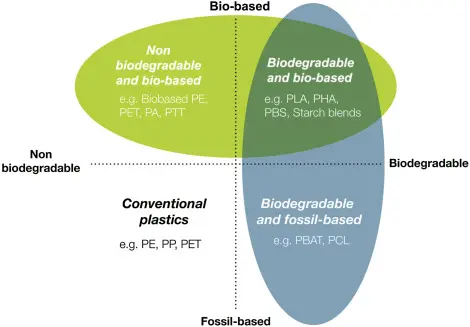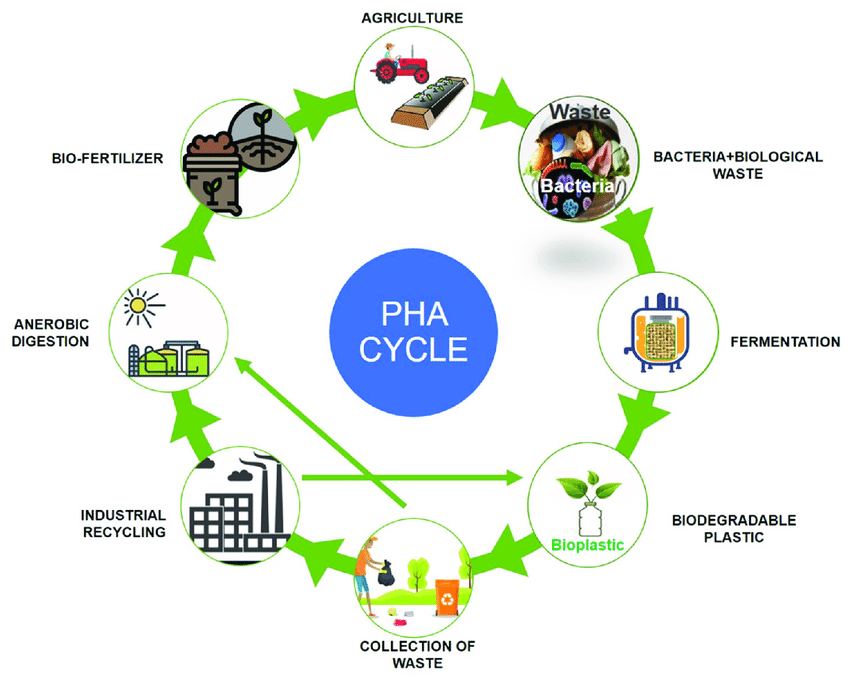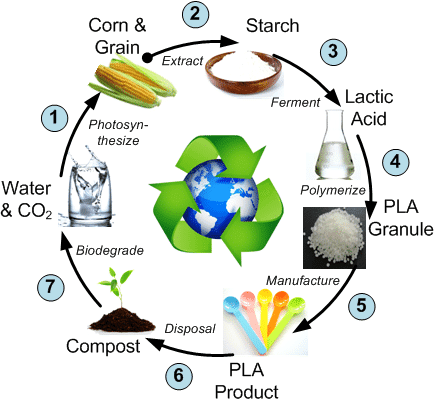Explore the Biodegradable World: PHA vs. PLA Comparison!
In today's society, where environmental concerns are crucial, finding sustainable alternatives to standard plastics has become critical. Biodegradable plastics are a possible alternative for reducing plastic pollution and its negative impact on the environment. In this article, we'll look at two prominent biodegradable plastics: Polyhydroxyalkanoates (PHA) and Polylactic Acid (PLA). Let's look at the complexities of these eco-friendly materials and settle the controversy between PHA and PLA.

Understanding biodegradable plastics:
Biodegradable plastics are those that can be degraded into simpler molecules like water, carbon dioxide, and biomass through natural processes such as microbial action. Unlike traditional plastics, which can persist in the environment for years, biodegradable polymers provide a sustainable alternative by degrading into harmless components. This distinction is crucial in combating the global plastic pollution crisis and building a greener future. Furthermore, distinguishing between biodegradable, compostable, and conventional plastics is crucial for making informed sustainability decisions.
Polyhydroxyalkanoates (PHA):
PHA, a class of biodegradable polymers created by microorganisms, could provide a viable alternative to petroleum-based plastic. PHA, derived from renewable resources such as sugars or lipids, is biodegradable, compostable, and useful in a wide range of applications, including packaging materials and medical equipment. PHA's properties, including as biocompatibility and thermoplasticity, make it an enticing option for ecologically friendly packaging and biodegradable products in a wide range of industries.

Polylactic Acid (PLA):
PLA, derived from renewable resources such as maize starch or sugarcane, is one of the most widely used biodegradable plastics. PLA, which is biodegradable, compostable, and biocompatible, has the potential to replace traditional plastics in packaging, textiles, biomedical applications, and other sectors. Its translucent, glossy appearance and moldability make it suitable for a wide range of uses, including as food containers, disposable cutlery, and 3D printing filaments.

Comparing PHA vs PLA:
Although PHA and PLA are both safe substitutes for conventional plastics in terms of the environment, their features, processes of production, and uses are different. Microbial fermentation produces PHA that is more adaptable and biodegradable, but it is expensive and challenging to scale. PLA has good transparency, stiffness, and heat resistance because it is manufactured from renewable resources and processed through polymerization; yet, for it to break down effectively, industrial composting facilities may be needed. Determining the ideal biodegradable plastic for a particular application requires an understanding of these distinctions.
Sustainability and its effects on the environment
PHA and PLA are assessed for their environmental impact at every stage of their lifespan, from the extraction of raw materials to disposal. The sustainability of biodegradable polymers is significantly impacted by energy use, greenhouse gas emissions, and waste production. Furthermore, the adoption and effectiveness of biodegradable alternatives in reducing plastic pollution are influenced by consumer behavior and recycling infrastructure. Important first stages in developing a circular economy and slowing environmental degradation are raising awareness and encouraging sustainable behavior.
Future Trends and Innovations:
With continuous research and innovation aimed at boosting production performance, efficiency, and scalability, the future of biodegradable plastics is bright. Innovations in biotechnology, including as fermentation optimization and metabolic engineering, are improving the yield and economic viability of PHA and PLA production. Additionally, new methods like bio-based polymer blends and monomers are expanding the applications and versatility of biodegradable plastics in a variety of industries. Sustainability is still a top priority, thus continuing research and development spending is essential to maximizing the potential of biodegradable plastics to address environmental problems worldwide.
Conclusion:
While every biodegradable plastic has advantages and disadvantages of its own, they all contribute to environmental preservation. Utilizing PHA and PLA is a big step toward a more sustainable and greener future, as consumers and businesses look for environmentally friendly products. Making informed decisions and promoting innovation in biodegradable plastics will contribute to leaving a cleaner, healthier planet for future generations. Together, we can build a more sustainable future and deepen our awareness of the biodegradable world.